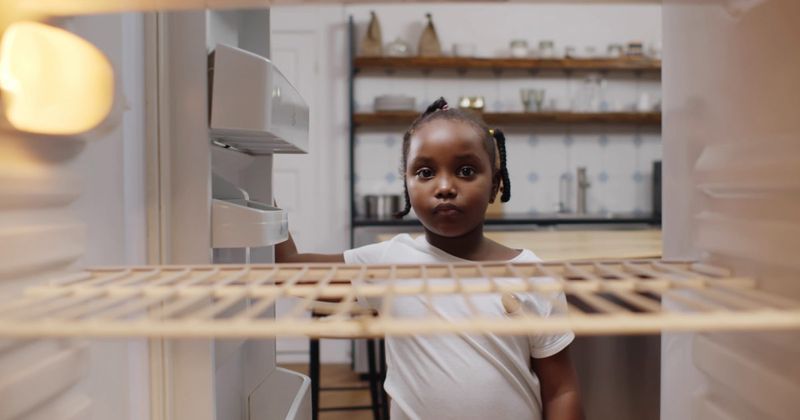Food insecurity associated with anxiety, depression among patients with food allergy
Click Here to Manage Email Alerts
SAN ANTONIO — People with food allergy who also face food insecurity are at greater risk for a variety of mental health issues, according to survey data presented at the American Academy of Allergy, Asthma & Immunology Annual Meeting.
These mental health issues may be specific to food allergy as well as general anxiety and depressive symptoms, Anita Roach, MS, vice president of health equity and community engagement at Food Allergy Research and Education (FARE), told Healio.

“The differences between at risk for food insecurity vs. not at risk are all significant,” Roach said.
Study design
The FARE Community Access Program tapped a multidisciplinary team of patients, community leaders and survey methodology experts to develop the survey, which used the Four-Item Patient Health Questionnaire-4 (PHQ-4) for Anxiety and Depression and the validated Hunger Vital Sign screening tool to measure patient health outcomes including mental health and food insecurity.
Trusted community-based, patient advocacy and faith-based organizations recruited 724 respondents from the South Ward of Newark, New Jersey, and then expanded across the country for a total of 5,490 participants in the survey, which was administered during the summer of 2021.
These participants included 3,880 English- and/or Spanish-speaking adults with food allergies as well as 1,974 caregivers of children with food allergy and 368 partners or spouses of those with food allergy. Participants received $25 for completing the survey.
The population included non-Hispanic Asian (n = 171; 3.2%), non-Hispanic Black (n = 1,129; 21.3%), Hispanic (n = 1,084; 20.5%), non-Hispanic multi-racial or other (n = 790; 14.9%) and non-Hispanic white (n = 2,118; 40%) respondents.
Annual household incomes included 1,448 (32.2%) respondents with less than $40,000, 2,078 (46.2%) with $40,000 to $65,000 and 976 (21.7%) with more than $65,000.
Using the Hunger Vital Sign, the researchers found that 331 (5.6%) participants were actively food insecure and 4,154 (69.9%) were at risk for food insecurity. The remaining 1,786 (30.1%) were not at risk.
Patients who were actively food insecure included six (3.5%) non-Hispanic Asian participants, 97 (8.6%) non-Hispanic Black participants, 28 (2.6%) Hispanic participants, 90 (11.4%) of the multi-racial or other participants and 109 (5.1%) of the non-Hispanic white participants.
By income, participants who were actively food insecure accounted for 110 (7.6%) of those making less than $40,000, 149 (7.2%) of those making between $40,000 and $65,000 and 46 (4.7%) of those making more than $65,000.
Study results
When prompted with the statement “I have had difficulty obtaining allergy-safe food due to the cost of the food,” 21.4% of the full cohort agreed and 5.3% of the full cohort strongly agreed. However, a greater proportion of those who were at risk for food insecurity were more likely to agree and less likely to disagree compared with those who were not at risk (P < .0001).
Similarly, 18.5% of the full cohort agreed and 5.3% strongly agreed that they have had difficulty obtaining allergy-safe food due to the lack of availability of allergy-safe food in their community, with significant differences between those at risk for food security and those not at risk (P < .0001), the researchers said.
With a score of 3 or higher indicating anxiety on the PHQ anxiety subscale, mean scores for anxiety included 2.17 for the full cohort, 2.85 for those with active food insecurity, 2.43 for those at risk for food insecurity and 1.28 for those not at risk.
Similarly, a score of 3 or higher indicated depression on the PHQ depression subscale, with mean scores of 2.14 for the total cohort, 2.85 for those with active food insecurity, 2.43 for those at risk for food insecurity and 1.28 for those not at risk.
Also, 30.1% of the total cohort self-reported anxiety, along with 30.2% of those with active food insecurity, 33.8% of those at risk and 21.4% of those not at risk. Similarly, 19.4% of the total cohort reported anger, along with 29% of those with active food insecurity, 24.7% of those at risk and 7.2% of those not at risk.
For the total cohort, those with active food security, those at risk and those not at risk, other mental health outcomes included loneliness (19.4%, 25.1%, 24.7% and 6.6%, respectively), fear of eating (12.4%, 18.7%, 16% and 4%) and bullying/victimization (19.2%, 8.5%, 21.8% and 12.9%).
Conclusions, next steps
Patients with food allergy facing food insecurity are at greater risk for mental health issues specific to their allergy in addition to more general anxiety and depression, the researchers concluded. Clinicians who treat these patients can help address these needs, Roach said.
“Providers need to be screening for food insecurity to be better equipped to handle the various mental health outcomes related to food insecurity and food allergy,” she said.
Also, patients who identify as non-white have higher risks for food insecurity, inability to access and afford safe foods, and negative mental health and quality of life effects, the researchers said. But help is on the way for all of these patients, Roach said.
“Our next step is to continue our work with the Community Access Program,” she said. “We are bringing together community stakeholders from different areas to improve the lives of people with food allergies in those communities.”
As part of the FARE Clinical Network, these groups include academic partners, community-based organizations, faith-based organizations and other nonprofits.
“There is a lot of work to do as it relates to health inequities,” Roach said, “so bringing different partners together, different stakeholders, really can help us figure out solutions to help address that issue.”

